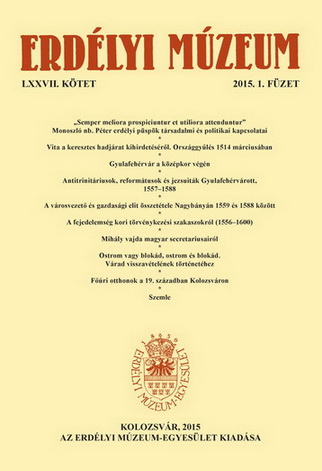A fejedelemség kori törvénykezési szakaszokról (1556–1600)
The Judicial Terms in the Principality of Transylvania (1556-1600)
Author(s): Zsolt BogdándiSubject(s): History of Law, 16th Century
Published by: Erdélyi Múzeum-Egyesület
Keywords: legislation; Principality of Transylvania; octave courts; Royal Table
Summary/Abstract: It’s a well-known fact that the court of the Royal Table became the principal royal conciliar court at the second half of the 15th century. The discussions usually took place during the judicial terms (generally four each year), the so-called octaves. The Royal Table of the elected king II. János Szapolyai has been mainly patterned after the medieval Table of the kings. The emerging new state’s characteristics, in particular the fact that it was composed of two slightly different regions (the so-called Partium and Transylvania with three privileged communities, Hungarian noblemen, Saxons and Szeklers) was reflected in the organization and the functioning of the Table. Different court sessions were held for the noblemen from Partium, for the Szeklers and for the noblemen of Transylvania. These octave courts (generally two for each privileged community) at the beginning of the studied period have started on the day of major feasts (Epiphany, St George, Lucae ev., Reminiscere) and from 1571 on the eighth day of these feasts, and they lasted around thirty days. The court sessions took place mostly in Gyulafehérvár (Alba Iulia), Kolozsvár (Cluj) and Székelyvásárhely (Târgu Mureș).
Journal: Erdélyi Múzeum
- Issue Year: LXXVII/2015
- Issue No: 1
- Page Range: 64-83
- Page Count: 20
- Language: Hungarian

